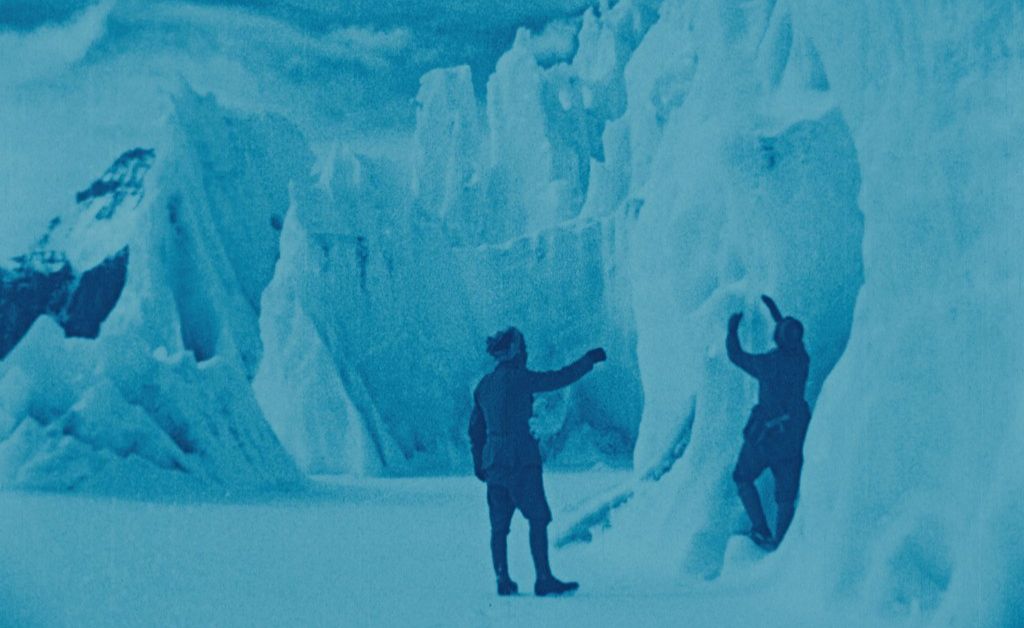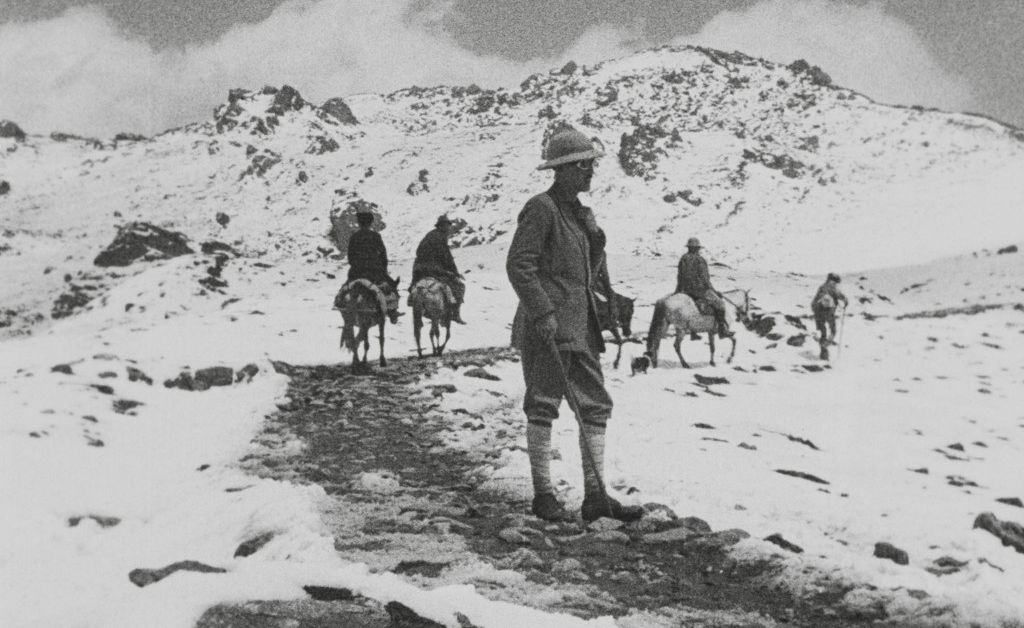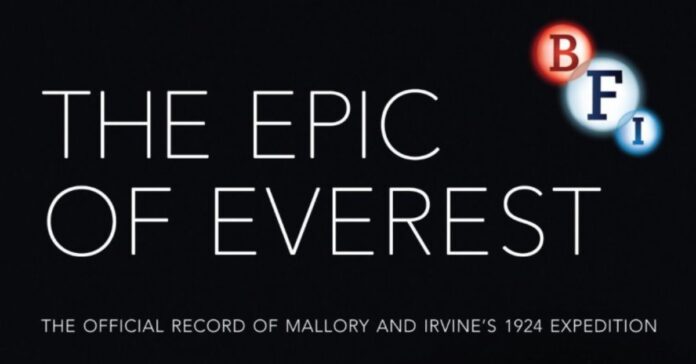In this Blu-ray review of “The Epic of Everest” (1924), viewers are transported to the awe-inspiring world of Mount Everest through breathtaking footage restored to high-definition brilliance.
Capturing the perilous journey of the 1924 British expedition, this pioneering documentary offers a rare glimpse into the challenges and triumphs of early mountaineering.
With stunning visuals and a stirring score, the Blu-ray presentation immerses audiences in the majesty and danger of the world’s tallest peak.
Blu-ray Review: “The Epic of Everest” (1924)
Even if it lacked any other merit, Captain John Noel’s documentary “The Epic of Everest” (1924) would be an astonishing historical artifact.
Offering a technologically advanced perspective on an unsuccessful quest for glory, the film chronicles the 1924 British Mount Everest expedition following a previous failed attempt in 1922.
Noel’s documentary is a comprehensive journalistic account, meticulously narrated through numerous intertitle cards, capturing the extensive preparations in Tibet and the subsequent climbing endeavors.
However, “The Epic of Everest” often transcends its mere documentary classification.
Its portrayal of the formidable mountain face, occasionally dotted with tiny human figures, is awe-inspiring, even in an era dominated by high-definition nature documentaries like “Planet Earth” and Imax presentations, where every detail is magnified.

Noel’s approach goes beyond mere description; he portrays Everest as a living entity, evoking a sense of both wonder and dread in shots of the mountain’s imposing surfaces.
Mount Everest might as well have been an alien entity for the men undertaking this expedition.
While the film initially includes some mildly colonialist observations about the Tibetan people and their unfamiliar customs, Noel’s fascination with their otherness pales compared to his reverence for the mountain itself.
Several shots of men traversing the snowy landscapes resemble scenes from a science fiction film.
Intertitles boldly proclaim the explorers as venturing where no human has gone before, prompting viewers to contemplate whether these individuals are still on Earth.
Captain John Baptist Lucius Noel was part of a team of 12 British men accompanied by numerous Tibetan and Sherpa porters for the journey.
With a custom-made 35mm camera weighing less than 20 pounds and featuring a 20-inch telephoto lens, Noel could capture events unfolding over three miles away.
There’s no need to make allowances for the era or the technology; this is undoubtedly a feat of technical mastery.
The film reflects the national pride that motivated the British Everest expeditions, with wide shots of the exploring team possessing a self-mythologizing quality akin to documenting the exploits of superheroes.
Yet, Noel doesn’t gloss over tragedy when it occurs. He embraces the fallibility and vulnerability of humanity rather than diminishing it.

As the film concludes, following the likely failed attempt by George Mallory and Andrew Irvine to reach the summit, it takes on a mythical tone.
Noel highlights the Tibetan name for the mountain, Chomolungma, meaning “Goddess Mother of Mountains,” suggesting Everest is both a giver and taker of life, offering a sense of context and tranquility.
Noel exhibits the sensibilities of both a meticulous documentarian and a poet; one of the film’s final intertitles praises the purity of the snow under which Mallory and Irvine’s bodies lie, posing a poignant question about the ideal resting place for those who perish amidst nature’s embrace.
The BFI’s new dual-format release of “The Epic of Everest” includes a Blu-ray and DVD version.
Presented in 1080p high definition at 24 frames per second in its original 1.33:1 aspect ratio, the film underwent restoration in collaboration with Sandra Noel, the director’s daughter.
Sourced from nitrate positives held by the BFI National Archive, the resulting transfer is remarkable, resembling an exceptional 35mm print with exquisite grain structure and fine detail.
The original color tinting has been faithfully recreated, and all intertitles have been meticulously reconstructed and restored from the original film elements.
The audio track defaults to the newly composed score by Simon Fisher Turner, an evocative and atmospheric piece featuring elements of period music and ambient sound effects, resembling a looming storm that unfolds during pivotal moments.
While Turner’s score is notably more experimental than what would have been heard in 1924, there were instances where it came close to overpowering the visuals.
However, for the most part, I found that Turner’s unconventional approach enhanced my appreciation for Noel’s innovative filmmaking.
For those who prefer a more traditional accompaniment, BFI has thoughtfully included a recreation of the 1924 score, compiled from over 25 musical selections and reconstructed under the direction of Julie Brown.
Turner’s score is presented in 5.1 DTS-HD Master Audio, while the 1924 score is offered in a lossless 2.0 track. Additionally, the Blu-ray disc is region-free, accommodating consumers worldwide.
Included bonus features in the set are:
- Introducing The Epic of Everest (9 minutes): Sandra Noel and silent film curator Bryony Dixon provide an overview of the film’s production history.
- Scoring The Epic of Everest (8 minutes): Simon Fisher Turner discusses the genesis of his new score and the ideas behind it.
- Restoring The Epic of Everest (6 minutes): Dixon, archivist Ben Thompson, and Lisa Copson of Deluxe Digital talk about the necessary restoration work and bringing the film into the digital realm.
- Four audio-only musical extras featuring pieces that accompanied the film at its first London screening: Prelude to Part I, Untitled; Prelude to Part I, Tibetan Lamas; Prelude to Part II, ‘Tibetan Pastoral Music’; The Mount Everest Suite: Airs of Tibet and Nepal.
- A downloadable PDF of the original 1924 film program (accessible only on the DVD copy).
- 30-page booklet, including an essay on the film by author and anthropologist Wade Davis, a piece on the fundraising commemorative expedition stamp by Sandra Noel, a restoration overview by Kieron Webb, and notes on their scores by Simon Fisher Turner and Julie Brown.
1924 / Black & White/Tinted / 1:33:1 / 87 min / £19.99

